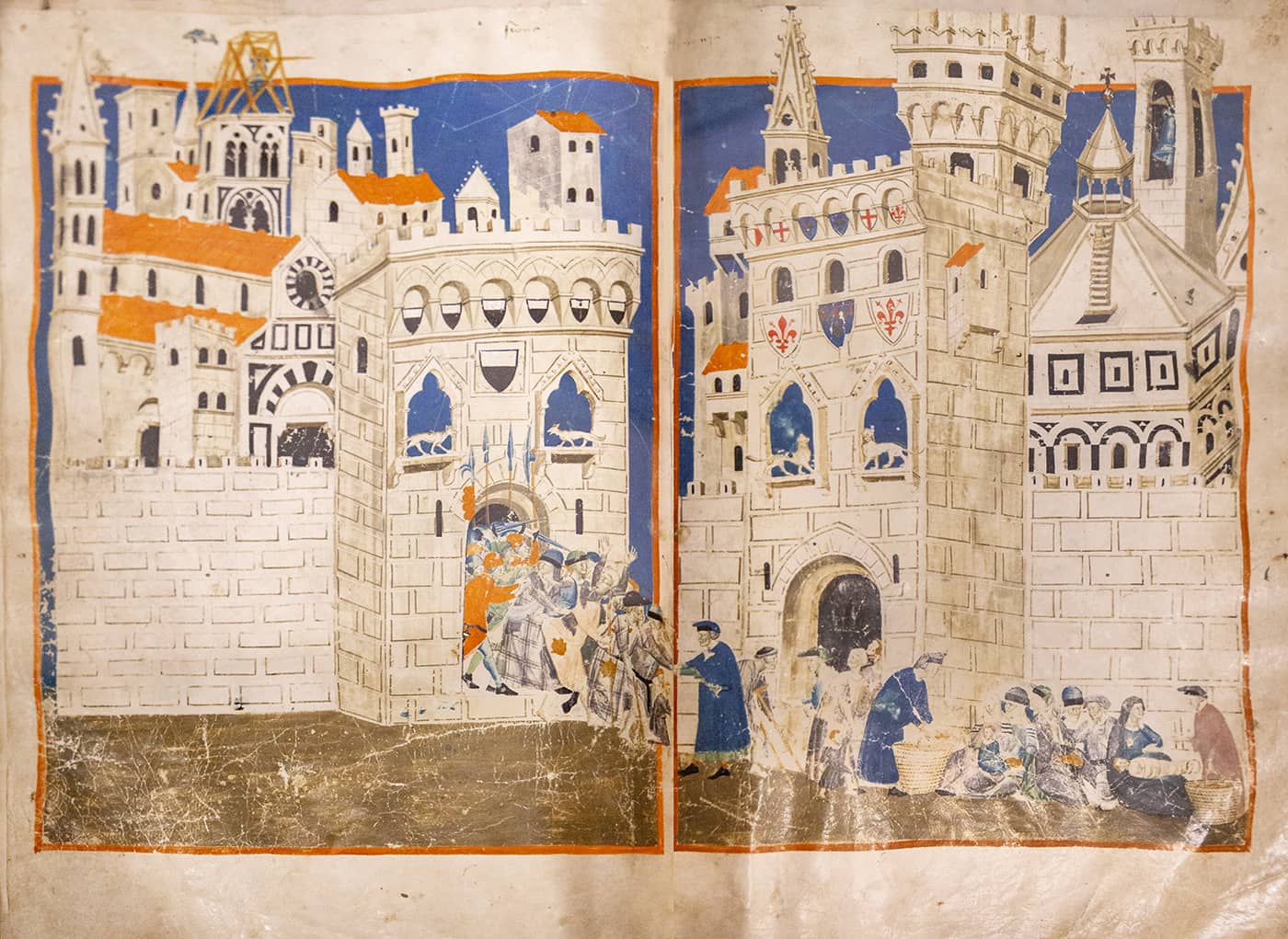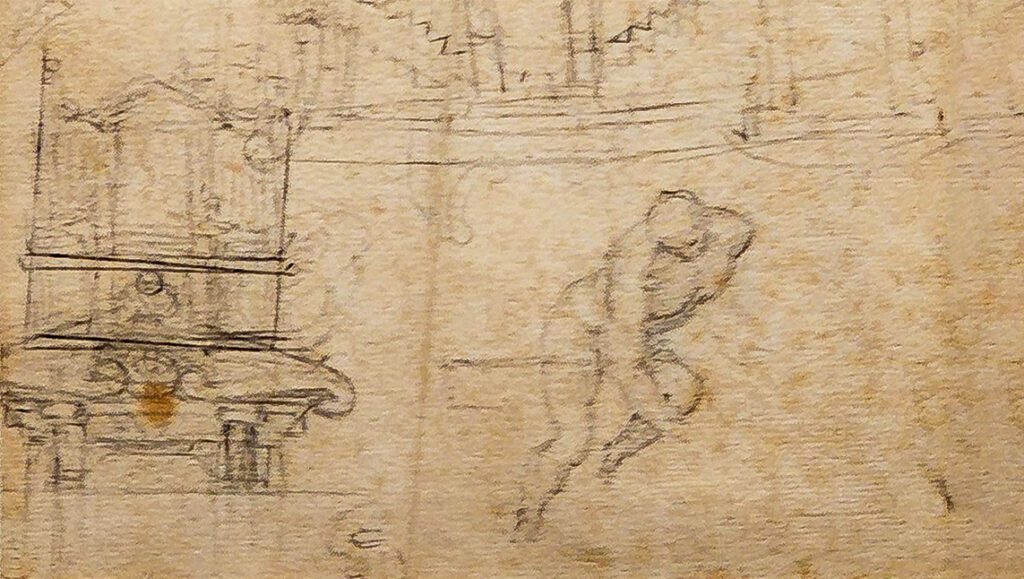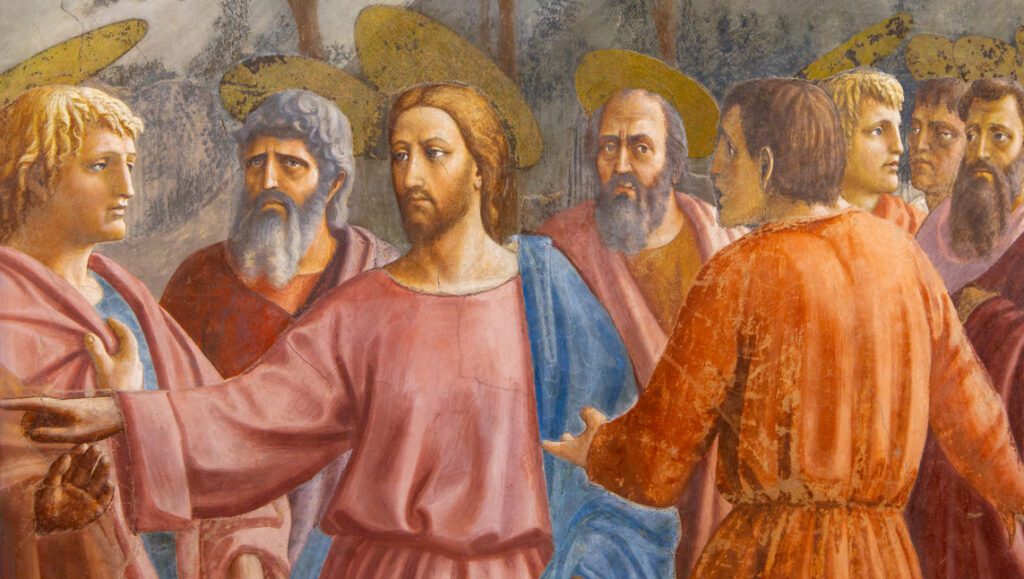
Saturday 24 July 2021, guided tour of the Dante exhibition at the Bargello
Saturday 24 July 2021 was the time to discover all the beauty of a wonderful exhibition, now hosted at the Bargello Museum in Florence and dedicated to Dante Alighieri. With the title “Onorevole e antico cittadino di Firenze” (Honorable and ancient citizen of Florence), a phrase taken from a comment by Giovanni Villani in the Cronaca Nova, the exhibition is a suggestive focus on the fortune of Dante’s Comedy in the years immediately following the death of the Great Poet.
The exhibition dedicated to Dante at the Bargello
The exhibition, curated by Luca Azzetta, Sonia Chiodo and Teresa De Robertis, professors of the Florentine university, is dedicated to the reconstruction of the relationship between Dante and Florence from the years immediately following the poet’s death – 1321, which this year precisely the eighteenth century – until the fifties of the fourteenth century, thanks above all to the precious testimonies of the copies of the Comedy produced starting from that period in some specialised Florentine workshops, of which some magnificent specimens are visible in the exhibition.
A momento of the guided tour at the Bargello Museum Exhibition, in 2021
Precious manuscripts loaned by important national and international institutions
The manuscripts on display have been loaned by many national and international library institutions; a conspicuous group of specimens comes from the three important Florentine libraries – the Laurentian Library, the Riccardiana and the central national library – while others are important loans from national and foreign institutions, such as the Trivulziana Library, or the Pierpont Morgan Library in New York. One of the valid reasons for visiting the exhibition is to be able to make a journey into the world of copyists and illuminators in Florence between the 1430s and 1450s, a period in which we find expert notaries intent on transcribing Dante’s work, as it was already usual for them to do with the classical texts.
Gorgeous miniatures
Furthermore, the novelty represented by the production of Dante’s work meant that the poet’s compositional methods (see for example the third rhyme) became the new drafting meter of the works that were transcribed from the classical tradition.
If at first glance this exhibition seems to be aimed only at specialists in the field of philology, one can actually see how it also offers non-experts – including myself, who is a guide by trade – a series of ideas for understanding how Dante was considered by the men of the generation immediately following him.
In this regard, there are also specimens with comments on Dante’s writings, which spread rapidly, demonstrating the success of the work of the Sommo Poeta who, over the course of twenty-five years, recorded a numerous production of copies in Florence alone aimed at «satisfying the hunger for Comedy of an entire city». In one of these, which is a commentary on Inferno XIII, the anonymous author claims to have questioned the poet about an ancient legend about Florence: it will be particularly nice to see how the text is presented accompanied by the drawing of a graceful little hand signaling to the reader the point in the text where he can find the moment of the question.
One of the great strengths of this exhibition is the presence of stupendous miniatures that accompany the specimens of the Comedy, and more. One of the most beautiful of all is a manuscript of the Comedy from the Trivulziana Library in Milan in which, in a passage from Paradise, Dante is depicted for the first time crowned by Apollo with the poetic laurel.
What we will also see in the guided tour dedicated to the Dante exhibition at the Bargello is the display of the so-called Libro del Biadaiolo, coming from the Biblioteca Laurenziana, in which the merchant identified by some as Domenico Lenzi had what must have been a common price list decorated of grain prices with miniatures of great artistic and historical interest, as well as political. Among the illuminated pages of this manuscript, those open to the eye are a fascinating double view of Siena and Florence as examples of ‘good’ and ‘bad government’, at antipodes to each other, in times of famine.
The images of Florence and Siena as examples of ‘good’ and ‘bad government’ in the miniatures from the Libro del Biadaiolo 1320-40 c, showcased in the exhibition
The exceptional Boccaccio autograph on display
The chronological deadline on which the itinerary presented in the Dante exhibition at the Bargello is attested is not by chance the fifties of the fourteenth century, the period in which we have the definitive consecration of Dante due to Giovanni Boccaccio.
Of great importance was the contribution of the poet from Certaldo, who copied the Comedy three times with his own hand; it will undoubtedly surprise visitors to be able to appreciate the return of one of these three autographed specimens, dating back to around 1350-1355, exceptionally granted by the Archivo y Biblioteca Capitular of Toledo in Florence, a city from which it has been missing for centuries.
Furthermore, it is important to remember the particular symbolic value of the Dante exhibition at the Bargello because it is precisely in this building – the one that Alghieri had constantly frequented when he held the position of Prior – that the Podestà Cante de’ Gabrielli of Gubbio condemned him in in absentia on January 27, 1302, accused of bartering, corruption and fraud. A few months later, on 10 March 1302, in what was then the Sala dell’Udienza (today Salone di Donatello) the sentence was issued which condemned the poet to perpetual exile and to the stake if he returned to Florence.
Finally, a further link between Dante and the Bargello is the presumed ancient ‘portrait’ of the poet which is preserved, dated within 1337, when Giotto and his workshop created it.
«These celebrations should be an opportunity to bring the beauty of literature and poetry closer to the beauty of literature and poetry and therefore to the appreciation of Dante Alighieri’s work». These are the words of Luigi Dei, Rector of the University of Florence.
The Maddalena Chapel and Dante’s first “Inferno”.
Thanks to this serious and authoritative approach, but at the same time open to dissemination aimed at the general public, the seven hundredth anniversary of the death of the Supreme Poet is worthily celebrated, we have the opportunity to take a guided tour admiring the stupendous works on display, where the authors of the main miniatures mentioned above are also present with paintings, such as the beautiful panel with the Lignum Vitae by Pacino di Bonaguida. In the last part of our guided tour of the Dante exhibition at the Bargello we will go to see the Maddalena Chapel, where, in the significant execution by Giotto and Bottega, we will discover what is the curious object that allows us to identify Dante’s face among those numerous in the Paradise scene. On the opposite wall, where some fragments of fresco allow us to recognize Hell, we will find a character who will make us understand how Dante’s Comedy even came to influence the iconography of a great master like Giotto.
How can you participate in the guided tour of the Dante exhibition
To participate in the guided tour, just write an email to info@guidaturistica-michelebusillo.com or send a message, also via whatsapp, to +39 333 2591526
A special thank is due to Riccardo Starnotti, who is dealing with of a great work of popularisation of the figure of Dante Alighieri. Thank to his help this tour has become reality ⟣
Bibliography
L.Azzetta, S.Chiodo, T.De Robertis (a cura di), Onorevole e antico cittadino di Firenze. Il Bargello per Dante, catalogo della mostra, Firenze, Museo Nazionale del Bargello, 21 aprile-31 luglio 2021, Mandragora, Firenze 2021 (Italian edition)





